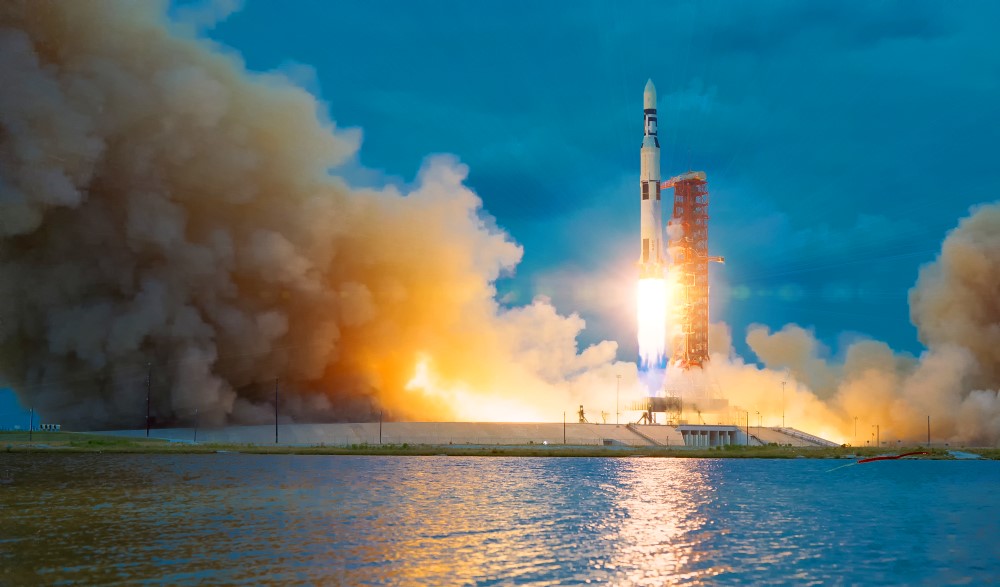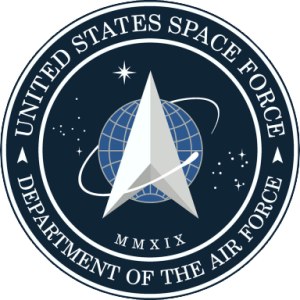Kennedy Space Center
The history of Cape Canaveral, the site of the Kennedy Space Center, dates back thousands of years to the earliest Native American inhabitants. Spanish explorers arrived in the area in the 16th century. The cape got its name from Spanish explorer Juan Ponce de León in 1513, who named it “Cabo Cañaveral.”
Fast forward to the mid-20th century, the U.S. government selected Cape Canaveral in 1949 as a test site for long-range missiles due to its location near the equator, which allows rockets to take advantage of the Earth’s rotation for extra speed, and its eastern seacoast location ensures that rockets are launched over water for safety reasons.
The Space Age Begins: Cape Canaveral Air Force Station
The Cape Canaveral Air Force Station, as it was then known, hosted its first rocket launch in 1950. As the Cold War escalated, it became a vital military installation for the testing of intercontinental ballistic missiles.
The Station’s importance escalated further with the dawn of the space age. Following the launch of the Soviet satellite Sputnik in 1957, the United States hastened its own space exploration efforts. The Air Force Station was chosen to host these efforts, and the first American satellite, Explorer 1, was launched from Cape Canaveral in 1958.

NASA and the Kennedy Space Center
In response to the Soviet Union’s early achievements in space, the U.S. government created NASA in 1958. As NASA began planning for manned missions to space, it soon became clear that a larger, more specialized facility was needed. In 1961, NASA announced that it would build a new spaceport, the Launch Operations Center, next to Cape Canaveral.
Tragically, President John F. Kennedy, who had been a strong proponent of America’s space program, was assassinated in 1963. Shortly thereafter, both the spaceport and Cape Canaveral were renamed in his honor. The Launch Operations Center became the Kennedy Space Center (KSC), and Cape Canaveral became Cape Kennedy. However, the name change of the cape was reversed in 1973 due to local opposition, but the space center retained the Kennedy name.
The KSC took over all NASA launches, while the Cape Canaveral Air Force Station continued to host military and commercial launches. The KSC was the launch site of every manned NASA mission from Apollo 8 in 1968 to STS-135, the final flight of the Space Shuttle, in 2011. This includes all the Apollo moon missions, the Skylab space station, and the Space Shuttle program.
The Shuttle Landing Facility (SLF) is a significant part of the Kennedy Space Center, located within the boundaries of the Merritt Island National Wildlife Refuge.
The Shuttle Landing Facility is an airport located on Merritt Island in Florida, United States. It is part of the Kennedy Space Center and was used by NASA’s Space Shuttle for landing until the program ended in 2011. At 15,000 feet long and 300 feet wide, the runway at the SLF is one of the longest and widest in the world, designed to accommodate the Space Shuttle upon its return from space missions.
The facility is unique in being located within the Merritt Island National Wildlife Refuge, a 140,000-acre nature reserve that’s home to a wide array of flora and fauna, including several endangered species. The co-existence of these two very different uses of the land – high-tech spaceflight and nature conservation – is a fascinating feature of the Kennedy Space Center and the surrounding area.
After the conclusion of the Space Shuttle program, the SLF has been repurposed for use by a range of different entities. This is in line with the broader transformation of the Kennedy Space Center into a multi-user spaceport. Today, the SLF is used for aircraft operations, commercial spaceflight landing and recovery operations, and other aerospace and non-aerospace activities. One of the users is SpaceX, which has considered the SLF as a landing site for its Crew Dragon spacecraft on return missions from the International Space Station.
Present Day and Beyond
After the end of the Space Shuttle program in 2011, the KSC went through a period of transition. It was redesigned as a multi-user spaceport to accommodate commercial spaceflight companies alongside NASA’s operations. Today, it is home to a variety of launch facilities used by NASA, the Department of Defense, and commercial spaceflight companies like SpaceX.
Cape Canaveral Space Force Station, renamed in 2020, also continues to be a bustling hub for military, scientific, and commercial launches. It hosts a variety of rockets from different providers, playing a crucial role in the burgeoning commercial space industry.
Cape Canaveral Space Force Station
Formerly known as Cape Canaveral Air Force Station, the Cape Canaveral Space Force Station is a significant location for space exploration. Adjacent to the Kennedy Space Center, this area has been the launch site of many pivotal missions throughout space history.
In 2020, with the establishment of the United States Space Force, the 45th Space Wing in charge of the station was redesignated as the Space Launch Delta 45, and Cape Canaveral Air Force Station was renamed Cape Canaveral Space Force Station (CCSFS). This shift solidified the location’s critical role not just in historical and current space activities, but also in future military space operations.

Facilities and Operations
CCSFS is equipped with a range of launch pads and facilities, some of which have been active since the early days of American space exploration. The facilities have hosted an array of launch vehicles, including Atlas, Titan, Delta, and Falcon rockets.
Although CCSFS is a military installation, its facilities have also been used by commercial and government entities. For instance, SpaceX regularly launches its Falcon rockets from CCSFS, delivering payloads to orbit and contributing to the International Space Station (ISS) resupply missions.
CCSFS, along with Vandenberg Space Force Base in California, provides crucial support for the American space launch operations. Its range operations include not just the management of launches, but also safety and tracking of the vehicles that are launched.
Space Force and Future Operations
The transition to a Space Force station reflects the U.S. government’s recognition of space as a strategic military domain. The Space Force, as the newest branch of the U.S. Armed Forces, is responsible for organizing, training, and equipping space forces to protect U.S. and allied interests in space.
Kennedy Space Center is the launch site for NASA’s Artemis program, aiming to return humans to the moon and eventually push forward to Mars. This ambitious endeavor symbolizes the continued relevance and importance of the Kennedy Space Center, more than half a century after it was first founded.